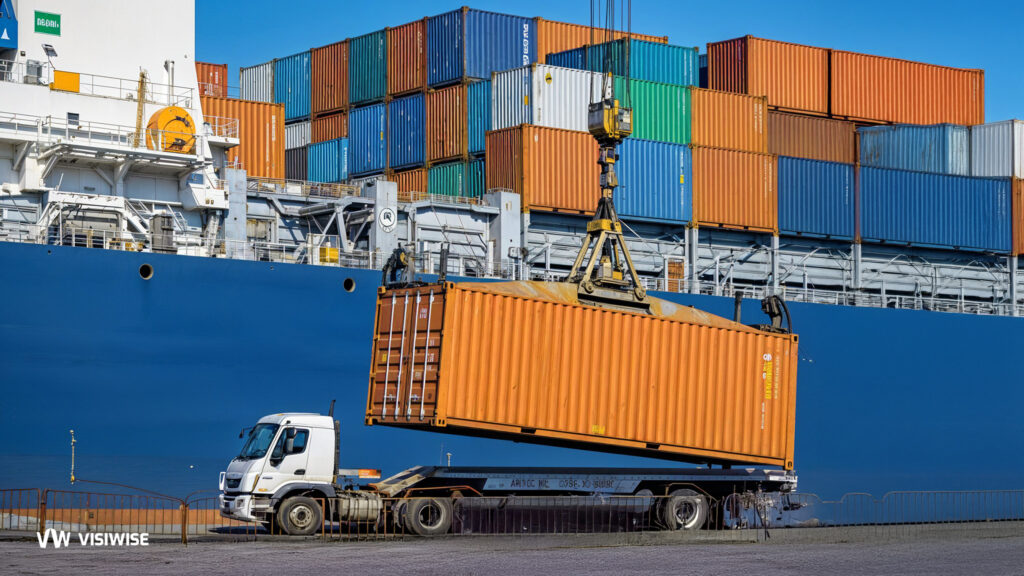In the world of international shipping and logistics, the terms "port of discharge" and "place of delivery" are frequently encountered. While they may sound similar, they represent distinct stages in the journey of goods from the seller to the buyer. Understanding these concepts is crucial for smooth and efficient handling of shipments, minimizing confusion, and ensuring compliance with contractual and legal obligations. This article aims to clarify the differences between the port of discharge and the place of delivery, explaining their significance in the shipping process.
Port of Discharge
The port of discharge refers to the specific location where goods are unloaded from a vessel or an aircraft. This is a pivotal point in the transportation process, as it marks the end of the sea or air leg of the journey. The port of discharge is crucial for several reasons:
- Customs Clearance: This is typically the location where customs authorities inspect and clear goods. Proper documentation and compliance with local regulations are essential to avoid delays and fines.
- Transfer of Responsibility: Depending on the terms of the contract, the port of discharge can also signify the point where the risk and responsibility for the goods transfer from the seller to the buyer. This is often outlined in the Incoterms (International Commercial Terms) agreed upon by both parties.
- Storage and Handling: Once goods are offloaded, they may need to be stored temporarily at the port before further transportation. Port authorities and logistics providers manage these activities, including handling, storage, and sometimes repackaging.
What is the difference between port of discharge and port of delivery?
The port of discharge and the port of delivery are shipping terms that are commonly mentioned in the bills of lading, though there are some differences between the two. The port of discharge is the place where cargo is discharged by the carrier, whereas the port of delivery is the final destination of the container or cargo. While a port of discharge can be a sea port in a foreign country, a place of delivery is likely an inland location (away from the port of discharge).
Place of Delivery
The place of delivery is the final destination where the goods are handed over to the buyer or the consignee. It marks the conclusion of the transportation journey and is typically specified in the sales contract. The place of delivery has its own set of implications:
- Completion of Transport: The place of delivery can be a warehouse, a distribution center, or any other specified location. It is the endpoint of the logistics chain and the point where the buyer takes physical possession of the goods.
- Fulfillment of Contractual Obligations: The delivery of goods to the specified place signifies the fulfillment of the seller’s obligations under the sales contract. It also determines the final transfer of ownership, depending on the agreed Incoterms.
- Final Inspection and Acceptance: At the place of delivery, the buyer typically inspects the goods to ensure they meet the agreed-upon standards and specifications. Any discrepancies or damages discovered at this stage can lead to claims or disputes.
Port of Discharge vs. Place of Delivery in Bill of Lading (BL)
In the context of a Bill of Lading (BL), the terms "Port of Discharge" and "Place of Delivery" refer to distinct stages in the transportation and transfer of goods. The Port of Discharge is the designated port where the cargo is unloaded from the shipping vessel, marking the end of the maritime segment of the journey. It is a critical juncture for customs clearance and may also be where the transfer of risk from the seller to the buyer occurs, depending on the Incoterms agreed upon. In contrast, the Place of Delivery specifies the final destination where the goods are to be handed over to the consignee or buyer. This location could be a warehouse, distribution center, or another agreed-upon site. It signifies the completion of the transportation process and the point at which the buyer assumes full responsibility for the goods. Understanding the distinctions between these two terms in a BL is essential for ensuring the proper handling, transfer, and delivery of shipments in international trade.
Key Differences and Considerations
While both the port of discharge and the place of delivery are critical points in the logistics chain, they serve different functions and are relevant at different stages of the shipping process.
- Stage in the Journey: The port of discharge is concerned with the unloading of goods from the main transport vessel, while the place of delivery pertains to the final transfer of goods to the buyer.
- Legal and Contractual Implications: The choice of port of discharge and place of delivery can affect various aspects of the contract, including liability, insurance, and cost distribution. For instance, under the Incoterm CIF (Cost, Insurance, and Freight), the seller’s responsibility ends at the port of discharge, whereas under DAP (Delivered at Place), the seller is responsible until the goods reach the place of delivery.
- Operational Considerations: Logistics providers and shipping companies must carefully plan and coordinate the transfer of goods from the port of discharge to the place of delivery. This involves considering factors like transportation modes, storage requirements, and local regulations.
Conclusion
In summary, the port of discharge and the place of delivery are distinct yet interconnected terms in the realm of international shipping. The former denotes where goods are unloaded, while the latter signifies the endpoint of the delivery process. Understanding the differences between these two terms is essential for managing international shipments efficiently and ensuring that all contractual and legal obligations are met. Whether you’re a shipper, consignee, or logistics provider, clarity on these concepts can prevent costly misunderstandings and ensure a smooth flow of goods across borders.



